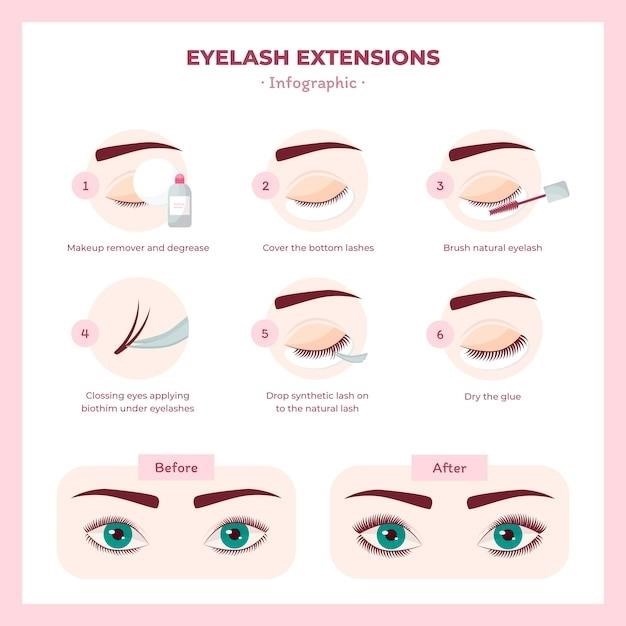System Sensor Smoke Detector Manual⁚ A Comprehensive Guide
This guide serves as a comprehensive resource for understanding and utilizing System Sensor smoke detectors. It covers essential aspects from key features and types to installation, maintenance, troubleshooting, and safety regulations. Whether you’re a homeowner, installer, or professional, this manual provides valuable information to ensure the proper functioning and optimal performance of your System Sensor smoke detectors.
Introduction
System Sensor smoke detectors are an integral part of fire safety systems, playing a crucial role in early fire detection and alerting occupants to potential danger. These detectors utilize advanced technology to sense the presence of smoke, triggering alarms to evacuate buildings and prevent catastrophic incidents. System Sensor, a leading manufacturer of fire safety equipment, offers a wide range of smoke detectors designed for various applications, including residential, commercial, and industrial settings.
This manual provides a comprehensive guide to System Sensor smoke detectors, covering their key features, types, installation, maintenance, troubleshooting, and safety regulations. It aims to equip users with the necessary knowledge and understanding to ensure the proper functioning and optimal performance of these vital safety devices.

By thoroughly reading this manual, users will gain insights into the principles of smoke detection, the different types of System Sensor detectors available, and the best practices for installation, maintenance, and troubleshooting. This information will empower users to make informed decisions regarding their fire safety systems and ensure the protection of their property and lives.
Key Features of System Sensor Smoke Detectors
System Sensor smoke detectors are renowned for their advanced features that enhance their reliability, sensitivity, and user-friendliness. These features contribute to their effectiveness in detecting smoke and providing timely warnings, ensuring the safety of occupants. Key features of System Sensor smoke detectors include⁚
- Photoelectric Technology⁚ System Sensor detectors primarily utilize photoelectric technology, which detects smoke particles by sensing changes in light scattering. This technology is highly effective in detecting smoldering fires that produce larger smoke particles.
- Interconnectability⁚ Many System Sensor smoke detectors are designed for interconnectability, allowing them to be linked together in a network. This feature ensures that an alarm triggered in one detector will activate all connected detectors, providing a wider alert zone.
- Compatibility⁚ System Sensor detectors are compatible with various fire alarm control panels, ensuring seamless integration into existing fire safety systems.
- Easy Installation⁚ System Sensor detectors are designed for easy installation, typically requiring simple wiring connections and minimal tools.
- Low Maintenance⁚ System Sensor detectors require minimal maintenance, typically involving periodic cleaning and testing. They are built to withstand the test of time and provide years of reliable service.
These key features make System Sensor smoke detectors a reliable and effective choice for fire safety in homes, businesses, and industrial facilities.
Types of System Sensor Smoke Detectors
System Sensor offers a diverse range of smoke detectors, catering to different applications and requirements. These detectors are designed to meet specific needs, ensuring optimal fire protection in various settings. Here are some common types of System Sensor smoke detectors⁚
- Two-Wire Smoke Detectors⁚ These detectors are designed for easy installation, requiring only two wires for power and signal transmission. Examples include the 2W-B and 2WT-B series.
- Four-Wire Smoke Detectors⁚ These detectors offer greater flexibility with four wires for separate power and signal connections. Examples include the 4W-B and 4WT-B series.
- Combination Smoke/Heat Detectors⁚ These detectors combine smoke detection with heat sensing capabilities, providing enhanced protection against various fire types. Examples include the 2100TS and 24TSRB models.
- Duct Smoke Detectors⁚ These detectors are specifically designed for installation in air ducts, providing early warning of fires originating in concealed spaces. Examples include the D4120 and D4S models.
- Intrinsically Safe Smoke Detectors⁚ These detectors are designed for use in hazardous environments, where they meet stringent safety standards to prevent ignition sources. Examples include the 2251EIS model.
System Sensor’s diverse range of smoke detector types allows users to select the most suitable model for their specific needs, ensuring comprehensive fire safety in a variety of environments.
Installation and Maintenance
Proper installation and regular maintenance are crucial for ensuring the optimal performance of your System Sensor smoke detectors. Following these guidelines will help you maximize their effectiveness and ensure your safety⁚
- Placement⁚ Install smoke detectors in strategic locations throughout your home, following the manufacturer’s recommendations. Typically, these locations include hallways, bedrooms, and living areas. Ensure detectors are mounted on the ceiling or high on walls, avoiding areas prone to dust or airflow obstructions.
- Wiring⁚ Connect the smoke detectors to your fire alarm system according to the manufacturer’s instructions. Ensure all wiring connections are secure and properly insulated. Use appropriate wire gauges and connectors.
- Testing⁚ Regularly test your smoke detectors to ensure they are functioning correctly. Most detectors have a test button that should trigger an alarm. Conduct monthly tests to confirm their responsiveness.
- Cleaning⁚ Dust and debris can accumulate in the smoke detector’s sensing chamber, potentially affecting its sensitivity. Regularly clean the chamber with a vacuum cleaner or a soft brush to ensure proper air circulation.
- Battery Replacement⁚ Smoke detectors typically utilize batteries, which should be replaced at least once a year or as indicated by the manufacturer. Ensure you use the correct type of batteries recommended for your specific detector model.
By adhering to these installation and maintenance guidelines, you can ensure your System Sensor smoke detectors remain operational and provide reliable protection against fire hazards.
Troubleshooting and Common Issues
While System Sensor smoke detectors are designed for reliability, occasional issues may arise. This section addresses common problems and offers troubleshooting steps to help you resolve them⁚
- False Alarms⁚ Frequent false alarms can be frustrating. Common causes include dust accumulation, cooking smoke, steam, or insects entering the sensing chamber; Clean the detector thoroughly, ensuring the chamber is free of obstructions. If the problem persists, consider relocating the detector away from potential triggers.
- No Alarm⁚ If your smoke detector fails to alarm during a test or when exposed to smoke, check the battery first. Ensure it’s properly installed and has sufficient charge. If the battery is fine, examine the wiring connections for looseness or damage. Inspect the sensing chamber for dust accumulation, which may hinder its sensitivity. If these checks don’t resolve the issue, contact a qualified technician.
- Intermittent Alarms⁚ If your smoke detector intermittently alarms, it may indicate a malfunctioning sensor or a faulty wiring connection. Carefully check the wiring for any loose or damaged connections. If the problem persists, replace the detector. Consult the manufacturer’s instructions or a qualified technician for guidance.
- LED Indicators⁚ Most System Sensor smoke detectors feature LED indicators that display their status. A blinking LED often indicates a low battery or a potential problem with the detector. Consult the user manual for specific LED interpretations and troubleshoot accordingly.
By addressing these common issues, you can maintain the functionality and reliability of your System Sensor smoke detectors, ensuring they provide timely and effective fire protection.

Compatibility and Interoperability
System Sensor smoke detectors are designed to seamlessly integrate with various alarm systems and components. However, ensuring compatibility is crucial for optimal performance and reliable operation. This section explores key compatibility considerations⁚
- Alarm Control Panels⁚ System Sensor smoke detectors are compatible with a wide range of alarm control panels, both wired and wireless. Before installation, verify that your chosen control panel is compatible with the specific model of smoke detector you’re using. Refer to the manufacturer’s specifications and compatibility charts for guidance.
- Wiring Standards⁚ System Sensor smoke detectors typically utilize standard wiring configurations for easy integration. Check the detector’s specifications and ensure the wiring conforms to local electrical codes and industry standards. Consult a qualified electrician if you have any doubts about wiring compatibility.
- Interconnectability⁚ Some System Sensor smoke detectors feature interconnectability, allowing them to be linked together to create a network. This functionality enables coordinated alarms, enhancing overall fire protection. Ensure that the detectors you choose support interconnectability and follow the manufacturer’s instructions for proper linking.
- Remote Annunciators⁚ System Sensor smoke detectors may support optional remote annunciators, providing visual and audible alerts in areas distant from the primary detector. Ensure that the chosen remote annunciator is compatible with your smoke detector model. Refer to the manufacturer’s documentation for compatibility details.
By carefully considering compatibility aspects, you can ensure that your System Sensor smoke detectors integrate seamlessly with your existing alarm system, maximizing their effectiveness and providing reliable fire protection.
System Sensor Smoke Detector Specifications
Understanding the specifications of your System Sensor smoke detector is crucial for making informed decisions about installation, maintenance, and compatibility. Here are some key specifications to consider⁚
- Type⁚ System Sensor offers various types of smoke detectors, including photoelectric, ionization, and combination models. Each type utilizes different sensing technologies to detect smoke particles. Choose the appropriate type based on your specific needs and application.
- Power Source⁚ System Sensor smoke detectors can be powered by AC/DC sources, batteries, or a combination of both. Check the specifications to determine the power requirements and ensure compatibility with your wiring and power supply.
- Sensitivity⁚ The sensitivity of a smoke detector determines its ability to detect smoke at varying levels. Specifications will indicate the sensitivity range and any adjustable settings. Ensure the sensitivity is appropriate for your application and meets local regulations.
- Operating Temperature⁚ Smoke detectors have specified operating temperature ranges. Ensure the operating temperature of the detector is suitable for your environment. Extreme temperatures can affect detector performance.
- Dimensions and Weight⁚ The size and weight of the detector are important considerations for installation. Refer to the specifications to determine if it will fit in your desired location and if it requires additional mounting hardware.
Reviewing the specifications of your System Sensor smoke detector will ensure you have the right model for your needs and that it operates effectively within your environment.
System Sensor Smoke Detector Applications Guide
System Sensor smoke detectors are designed for a wide range of applications, each with its unique requirements. Understanding the appropriate applications for each type of detector is essential for ensuring optimal safety and performance. Here’s a guide to help you choose the right System Sensor smoke detectors for your specific needs⁚
- Residential Applications⁚ For homes, System Sensor offers a variety of smoke detectors designed for both wired and wireless installations. These detectors provide early warning of fire hazards, protecting occupants and property.
- Commercial Applications⁚ System Sensor smoke detectors are commonly used in commercial buildings, including offices, retail stores, and restaurants. These detectors often have advanced features like interconnectedness and compatibility with fire alarm systems.
- Industrial Applications⁚ System Sensor offers specialized smoke detectors for industrial settings, such as factories, warehouses, and manufacturing facilities. These detectors may be designed for harsh environments and feature features like dust and moisture resistance.
- Special Applications⁚ System Sensor also provides smoke detectors for unique applications such as⁚
- Duct Smoke Detectors⁚ For monitoring air ducts and HVAC systems, System Sensor offers detectors specifically designed for this purpose.
- Intrinsically Safe Detectors⁚ In hazardous environments, System Sensor offers intrinsically safe detectors that comply with safety standards and minimize the risk of explosions.
By carefully considering the specific application, you can choose the appropriate System Sensor smoke detector to effectively safeguard your property and ensure the safety of occupants.
System Sensor Smoke Detector Wiring and Connections
Proper wiring and connections are crucial for the reliable operation of System Sensor smoke detectors. The wiring requirements can vary depending on the specific model and application. However, some general principles apply to most System Sensor smoke detectors⁚
- Two-Wire Smoke Detectors⁚ These detectors typically use a single pair of wires to carry both power and signal. The wires are connected to a compatible alarm control panel, which provides power to the detector and receives the alarm signal.
- Four-Wire Smoke Detectors⁚ These detectors utilize two separate pairs of wires. One pair is for power, while the other carries the alarm signal. This configuration provides greater flexibility and can be used with a wider range of alarm control panels.
- Interconnected Smoke Detectors⁚ System Sensor offers interconnected smoke detectors that are linked together. When one detector senses smoke, it activates all other connected detectors, providing a broader alert system.
- Wiring Diagrams⁚ System Sensor provides wiring diagrams specific to each model. It’s essential to consult these diagrams for detailed instructions on connecting the wires to the detector and the alarm control panel.
- Professional Installation⁚ For complex installations or if you are unsure about wiring, it’s highly recommended to consult a qualified electrician or fire alarm professional to ensure proper wiring and connections for optimal performance and safety.
By following the provided wiring diagrams and seeking professional assistance when needed, you can ensure that your System Sensor smoke detectors are wired correctly for reliable operation and maximum safety.
System Sensor Smoke Detector Safety and Regulations
System Sensor smoke detectors are designed to meet stringent safety standards and comply with relevant regulations. Understanding these regulations is essential for ensuring the proper installation, maintenance, and operation of these detectors. Here are some key aspects to consider⁚
- NFPA Standards⁚ The National Fire Protection Association (NFPA) sets standards for fire alarm systems, including smoke detectors. NFPA 72, the National Fire Alarm Code, provides detailed guidance on the installation, testing, and maintenance of fire alarm systems, including smoke detectors.
- Local Building Codes⁚ Building codes vary by location and may have specific requirements for smoke detector installation. It’s crucial to consult with local building officials to ensure compliance with all applicable codes.
- UL Listing⁚ Underwriters Laboratories (UL) provides independent safety testing and certification for various products, including smoke detectors. System Sensor smoke detectors typically carry UL listings, indicating that they meet safety standards.
- Maintenance and Testing⁚ Regular maintenance and testing are vital for ensuring the proper functioning of smoke detectors. System Sensor recommends testing smoke detectors at least once a month and replacing the batteries annually.
- Professional Installation⁚ While some System Sensor smoke detectors can be installed by homeowners, it’s always advisable to consult with a qualified electrician or fire alarm professional for complex installations or if you have any doubts about installation procedures.
By adhering to safety standards, regulations, and recommended maintenance practices, you can ensure that your System Sensor smoke detectors provide effective early warning in the event of a fire, safeguarding your home and family.



























